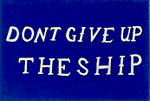US frigate Chesapeake
From WikiPOBia
The USN Chesapeake was a 36-gun frigate of the United States Navy during the Quasi-War with France and the War of 1812. It was one of the six original United States frigates.
She was launched in December 1799.
Chesapeake sailed in 1800 to join the squadron patrolling off the southern coast of the United States and in the West Indies during the Quasi-War with France. During this cruise, she took a French privateer as a prize. One of the few ships retained in the Navy at the close of the war, Chesapeake was sent to the Mediterranean Sea in 1802 as flagship for Commodore Richard V. Morris. Here she led in the blockade of Tripoli and convoyed American merchantmen until 1803, when she returned to America.
Contents |
Chesapeake - Leopard Affair
As tension mounted over the practice of impressment of American seamen by the British, Chesapeake was prepared for patrol and convoy duty, and late in June 1807 put to sea, passing a British squadron operating to intercept French ships then at Annapolis. One of the squadron, HMS Leopard, followed Chesapeake and on 22 June, when Chesapeake's captain refused to allow a search for British deserters, Leopard fired on the Chesapeake, killing three men, wounding 18 (including the captain) and damaging the ship severely, before proceeding to carry off four men. Chesapeake returned to Norfolk, Virginia for repairs, and then with Captain Stephen Decatur in command, cruised off the New England coast.
War of 1812
With the outbreak of the War of 1812, incidentally one of the incidents which had triggered the war was Chesapeake's encounter with Leopard, Chesapeake was outfitted at Boston for a lengthy Atlantic cruise. Between December 1812 and April 1813, she cruised from the West Indies to Africa, taking five British merchantmen as prizes.
At Boston, Captain James Lawrence took command of Chesapeake on 20 May 1813. At the time of his appointment to command of Chesapeake, Lawrence was the most junior captain on the U.S. Navy captains list. Lawrence put to sea on 1 June to meet the waiting Shannon (38), the crack frigate commanded by Philip Broke whose written challenge had just missed Chesapeake's sailing.A substantial percentage of Lawrence's crew was new to the ship and undrilled. Lawrence himself had little experience with the ship. He nonetheless chose to engage Shannon, a ship of roughly equal strength, but with a much more experienced and well-drilled crew than the Chesapeake. The Chesapeake suffered early in the exchange of broadsides, having its wheel shot away and losing maneuverability. A large percentage of the officers and crew stationed on the spar deck, including Lawrence himself, were either killed or wounded in the initial exchange of broadsides and small arms fire. Lawrence was carried below, mortally wounded. The crew struggled to carry out Lawrence's last order, "Don't give up the ship! Fight her until she sinks!", but were boarded by the Shannon's crew and overwhelmed. Chesapeake was taken to Halifax for repairs, and was later taken into the Royal Navy. She was sold at Plymouth in 1820 and broken up. Some of her timbers were used to build Chesapeake Mill, a water mill in Wickham, Hampshire.
| SPOILER WARNING: Plot or ending details for "The Fortune of War and The Surgeon's Mate" follow. |
In the Canon
In The Fortune of War, Jack Aubrey observes the Chesapeake getting ready for sea. During the escape from Boston harbor, it appears that they are pursued by a boat from the Chesapeake but it turns out to be on a training exercise. The final chapter relates the battle between Shannon and Chesapeake. In The Surgeon's Mate, the arrival of Shannon and her prize, the Chesapeake in Halifax is related. The burial of James Lawrence in Halifax is described.
References
• Toll, Ian W., (2006) Six Frigates: The Epic History of the Founding of the U.S. Navy, New York, W.W. Norton.


